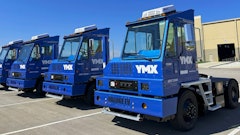
Companies continue migrating their IT resources and data to Amazon Web Services (AWS) to get its numerous advantages, including improved business performance, flexibility, and cost efficiency. For instance, 66% of AWS adopters note enhanced administrator performance, 43% report accelerated time to market for new features, and 20% note lower IT infrastructure costs, according to the 2022 report from The Hackett Group.
Despite these business advantages, the migration to AWS cloud is a challenging transformation, especially for a company moving a large number of apps, services, and data. Fortunately, companies can make even large-scale migrations more manageable and cost-effective by following best practices for AWS cloud migration.
1. Follow a three-phase migration approach
AWS provides a systematic and consistent blueprint designed for large-scale migration projects specifically. This approach involves three main stages:
Assess. A viable and realistic plan is essential for the success of a large-scale AWS migration. However, to build such a plan, a company should first assess its AWS cloud readiness, which includes the analysis of a legacy IT infrastructure, both at technical and business levels.
To run a 360-degree analysis, organizations can use the AWS Cloud Adoption Framework (AWS CAF), which helps assess a company's cloud readiness from six different perspectives—business, people, platform, governance, security, and operations. By analyzing each of these aspects, a company can determine the following:
- Which of them can be improved with the AWS cloud, and how?
- What are the dependencies between corporate applications?
- Which workloads should be migrated to AWS and which should be retired?
- Who is responsible for AWS cloud transformation within a company?
- What are the main barriers to AWS cloud migration?
- How would IT infrastructure's TCO change due to migration?
- What migration strategies are the most effective for a company's business case?
Mobilize. During the mobilization phase, a company develops a migration roadmap (based on the insights gained during the assessment) and prepares its workloads for migration. Additionally, this step includes allocating a team that manages data transfer and configures the new cloud infrastructure.
Migrate. Now, it is time to carry out the migration itself. In this final step, companies execute a chosen migration plan and move workloads to AWS, shut down retired legacy systems and data centers, and ensure that the migration process goes as planned.
2. Choose the right AWS migration tool stack
Companies can use multiple AWS tools provided to streamline and automate a range of migration tasks, which can be especially useful in large-scale projects. Here are some options:
AWS Migration Evaluator. This tool allows migration specialists to determine the economic feasibility of moving particular IT resources to the AWS cloud. For instance, by using AWS Migration Evaluator, a company can discover the existing service licenses and compare their costs to relevant AWS alternatives.
AWS Application Discovery Service. With this solution, migration specialists can discover and map the company's IT resources (including apps, data, servers, etc.) and assess the infrastructure more precisely.
AWS Control Tower. Migration teams can use AWS Control Tower to automate the setup of AWS environments (each can be created in less than half an hour), which allows for more rapid deployment of numerous cloud apps.
AWS Application Migration Service. With AWS Application Migration Service, specialists can automate lift-and-shift migrations of any scale and accelerate modernizations for already migrated solutions.
AWS Migration Hub. AWS Migration Hub allows migration teams to manage all their tools (including those described above) via a single digital interface.
3. Leverage AWS DevOps practices
The advanced automation and continuous monitoring inherent to DevOps can benefit large-scale AWS migration projects as well. A migration team can use DevOps tools provided by AWS to build CI/CD pipelines and automate routine tasks such as cloud software deployment and infrastructure provisioning to ensure faster and smoother migrations. In addition, DevOps teams can implement monitoring tools to keep track of the migrated resources for faster error discovery and resolution.
4. Establish a migration factory
Companies can significantly streamline cloud migration by setting up a migration factory. This is an organizational structure including resources, people, and processes that enable systematic and consistent mass migrations to the cloud.
Once the first batch of applications and data is migrated, a migration factory creates an automation template that can be applied to migrate other enterprise workloads. Since a migration factory operates based on the Agile methodology, it’s flexible enough to continually improve and optimize these templates, meaning each subsequent migration is even more cost-efficient and fast.
5. Implement an LMS
Even a minor cloud migration project should include training for corporate IT staff to adapt to new workflows. For example, an IT team member who has worked in on-premises IT for years won’t be able use AWS serverless efficiently due to the lack of skills in event-driven architectures, Lambda computing, and serverless identity management.
Moreover, IT staff training becomes more critical and challenging in large-scale projects affecting hundreds or even thousands of employees. This is why companies should develop a comprehensive training strategy for IT staff to ensure smooth AWS adoption.
However, a comprehensive strategy would take a lot of work to implement and maintain, since a company would have to provide continuous learning for hundreds or even thousands of employees, who can also be located in different regions. But a learning management system (LMS) can make this challenge more manageable.
LMS software allows companies to store, manage, and distribute multimedia training content (videos, documents, etc.) among employees in a centralized way. This way, a company can train even hundreds of distributed and remote teams simultaneously. In addition, LMSs allow companies and educators to track learner progress and engagement and then improve training materials.
Final thoughts
Although beneficial in many ways, AWS adoption and moving to the cloud is challenging, especially for those in need of a large-scale migration. Fortunately, companies can mitigate some of these challenges by following best practices for large AWS migration projects.
Still, large-scale migrations rarely go off without a hitch, as they are very complex and challenging to manage. For instance, given the large app numbers, a company can miss some of the critical dependencies during the assessment stage, which can lead to performance issues or even an unsuccessful migration.
Therefore, companies should pay special attention to the initial stages of migration since many risks can be identified and addressed in advance. We also recommend companies turn to AWS consultants early on, as they can identify company-specific migration risks, including hidden ones.




















